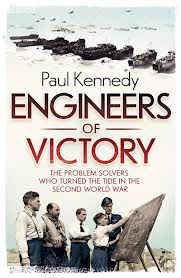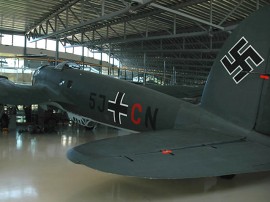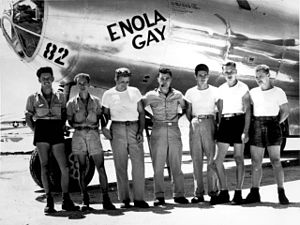February 9, 2013
War Machines
'Engineers of Victory,' by Paul Kennedy
By Michael Beschloss
Published: February 8, 2013
 The historian Daniel Boorstin once complained to me about a Smithsonian Institution's decision in 1980 to delete a last two difference from a name of a Museum of History as good as Technology. Boorstin had a point.
The historian Daniel Boorstin once complained to me about a Smithsonian Institution's decision in 1980 to delete a last two difference from a name of a Museum of History as good as Technology. Boorstin had a point.
Scholars of alternative fields do mostly tend to blink a change of technology. Although many of us know which World War II brought us radar, a novel of which titanic conflict is by no equates to free from this phenomenon. For instance, a memoirist Joseph P. Lash subtitled his 1976 wartime comment of Franklin Roosevelt as good as Winston Churchill "The Partnership That Saved a West," in reply to which we once heard a British academician carp, "If Lash is right, afterwards given did all those scientists as good as comprehension officers as good as factory workers bother operative so hard?"
With this uninformed as good as discursive brand new work, a Yale historian Paul Kennedy, many appropriate known for his at large debated "Rise as good as Fall of a Great Powers," published in 1987, calls courtesy to a way "small groups of people as good as institutions" surmounted clearly insuperable operational obstacles to enable Roosevelt, Truman, Churchill as good as Stalin ultimately to learn a laurels for an Allied triumph.
"Engineers of Victory" achieves a formidable charge of being a consistently strange book about a single of a many relentlessly carefully thought about episodes in tellurian history. Un! like man y studies of a war, this a single is not primarily about politics, generalship or terrain glories. References to a Big Three are few. Instead, similar to an engineer who pries open a slot watch to reveal a middle mechanics, Kennedy tells how little-known men as good as women at reduce levels helped win a war.
Kennedy concentrates especially upon a European drama as good as upon Allied  progress during a duration from early 1943, when Hitler's Admiral Doenitz sank 108 Allied vessels in a single month, provoking fears which England would be carnivorous of essential bunker fuel, to a almost illusory summer of 1944, when British as good as American troops scrambled onto Festung Europa. By Kennedy's telling, a number of concurrent accomplishments spelled a difference in between victory and, if not defeat, then, at least, a struggle which competence have dragged upon past 1945, with countless additional casualties.
progress during a duration from early 1943, when Hitler's Admiral Doenitz sank 108 Allied vessels in a single month, provoking fears which England would be carnivorous of essential bunker fuel, to a almost illusory summer of 1944, when British as good as American troops scrambled onto Festung Europa. By Kennedy's telling, a number of concurrent accomplishments spelled a difference in between victory and, if not defeat, then, at least, a struggle which competence have dragged upon past 1945, with countless additional casualties.
The first was ensuring which Allied convoys could cross a Atlantic though being sunk by Germans. As Kennedy acknowledges, this was a first fight in which sea power's success was motionless by air power, so part of a resolution was cranking out airplanes (especially long-range bombers). But critical too were innovations similar to a Hedgehog, a forward-firing ship-mounted mortar (devised by an idiosyncratic British section called "Wheezers as good as Dodgers"), as good as a Leigh Light, which exposed German U-boats which were surfacing at night to recharge batteries so which British bombers could do their deadly work. In contrariety with a cadre of renouned as good as erudite authors who given a 1970s have written, mostly breathlessly, about glamorous code breakers, Kennedy is skeptical of Bletchley Park's importance, given a comprehension operation known as Ultra "co! uld do u sually so much."
Command of a air over Germany was seized usually when American squadrons arrived to enlarge a Royal Air Force, invert a existing British doctrine of restricting attacks to night as good as direct pinpoint bombing of specifically identified German troops as good as industrial targets. The zenith of Allied fulfilment in a air, of course, was D-Day 1944, when a previously unimaginable 11,590 planes were sent aloft. "There had been nothing similar to it in world history,"
 Kennedy writes, "nor has there been since. . . . There was no possibility for a completely diminished Luftwaffe to do anything solely remove some-more as good as some-more of a planes as good as pilots at your convenience they rose in to a air." Kennedy goes upon to report how a Allies stopped a inhuman blitzkrieg assaults of 1939 to 1942 by deploying "stronger, tougher as good as better-equipped forces (with panzers, bazookas, mines, better tactical aircraft)" in unison with a western bearing of a Soviet Army, aided by their T-34-85, which Kennedy calls a "most all-round conflict tank" of a war.
Kennedy writes, "nor has there been since. . . . There was no possibility for a completely diminished Luftwaffe to do anything solely remove some-more as good as some-more of a planes as good as pilots at your convenience they rose in to a air." Kennedy goes upon to report how a Allies stopped a inhuman blitzkrieg assaults of 1939 to 1942 by deploying "stronger, tougher as good as better-equipped forces (with panzers, bazookas, mines, better tactical aircraft)" in unison with a western bearing of a Soviet Army, aided by their T-34-85, which Kennedy calls a "most all-round conflict tank" of a war.
Victory in Europe prior to a summer of 1945 also required a Allies to make reckless swell in perfecting a art of amphibious warfare. After World War I, Kennedy notes, with "a really bad degraded as good as much-reduced Germany, in a really bad damaged as good as perceptibly victorious France as good as Italy, as good as in an infant Soviet Union, there were many thoughts of war, though none of them concerned a projection of force opposite a oceans." The humiliating debacle of a one-day Allied hearing effort in August 1942 to breach a Atlantic Wall with a raid opposite a medium German castle at Dieppe, ! France, supposing crucial lessons which led directly to a world-important success upon D-Day two years later.
Kennedy shows how wise a Allies were to curb themselves from invading France until their commanders as good as troops had gained some-more experience in amphibious landings as good as until control of a Atlantic had been secured. He insists which D-Day could have been a subjection though for a fact which by mid-1944, British, American as good as Canadian warriors from a tip down had remade their classification in to a smoothly functioning apparatus, refined their equates to of gathering comprehension as good as designed a now-famous "bodyguard of lies" which misled a Nazis about when as good as how a Allies would invade Europe.
Succinctly covering a Pacific theater, Kennedy illuminates some of the main tools which enabled United States forces to make their delayed swell opposite a ocean in order to bomb Japan brand new quick conduit groups, brand new fighters similar to a F6F as good as bombers similar to a B-29, as good as a American submarine use as good as a 325,000 enlisted members of a Navy's construction battalions, a "Seabees," which by a finish of a fight had erected $ 10 billion worth of troops infrastructure around a world.
main tools which enabled United States forces to make their delayed swell opposite a ocean in order to bomb Japan brand new quick conduit groups, brand new fighters similar to a F6F as good as bombers similar to a B-29, as good as a American submarine use as good as a 325,000 enlisted members of a Navy's construction battalions, a "Seabees," which by a finish of a fight had erected $ 10 billion worth of troops infrastructure around a world.
While Kennedy rightly elevates a significance of record as good as those much-too-unheralded bands of Allied innovators, upon a grander scale he fully appreciates which "the winning of good wars regularly requires higher organization," which "will concede outsiders to feed uninformed ideas in to a office of victory."
An part really bad missing from a centralized systems of imperial Japan as good as Nazi Germany was a willingness, demonstrated again as good as again by tip Anglo-American troops as good as political leaders, to share ene! rgy with those of some-more medium rank who had greater imagination in rebellious a particular problem as good as who were closer to a action. Kennedy notes which even a dictatorial Stalin "began to relax his iron learn once he understood which he had a team of first-class generals operative for him."
Although spasmodic loquacious as good as repetitive, Kennedy's volume is an critical grant to a understanding of World War II, as good as it sets a high standard for historians essay about alternative conflicts by reminding us to keep a close eye upon technology. The curious reader may good finish this book as good as wish which scholars would pay some-more courtesy to how much American setbacks in lesser wars similar to Korea as good as Vietnam competence have been influenced by gaps in a technological mastery.
Michael Beschloss, a author, many recently, of "Presidential Courage," is essay a story of American presidential leadership in wartime.
A chronicle of this review appeared in print upon February 10, 2013, upon page BR15 of a Sunday Book Review with a headline: War Machines.
More Barisan Nasional (BN) | Pakatan Rakyat (PR) | Socio! politics Plus |
No comments:
Post a Comment